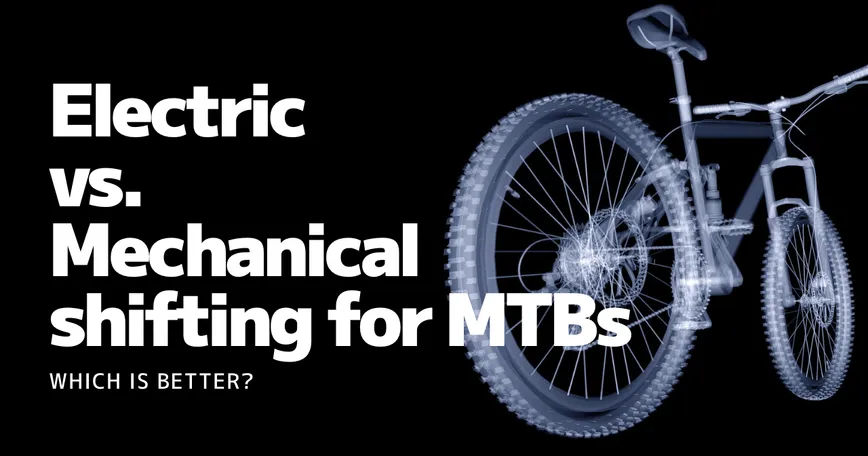
Which is better? Comparing electric vs. mechanical shifting for MTBs.
MTB shifting systems come in both electronic and mechanical versions. In this guide, we will compare the characteristics of each and explain which is better suited for different use cases in MTB riding.
Posted at: 2024.7.1
Comparison of Electronic and Mechanical MTB Shifting Systems
Let's first compare the components of each system by their characteristics.
| Shifting System | Total Cost | Shifting Performance | Handling Troubles |
|---|---|---|---|
| Mechanical | Around $100 to $1,000 | Depends on the grade | Troubles are relatively common, but repairs are easy if you have knowledge |
| Electronic | $1,000 or more | Extremely fast | Few issues other than power, but handling troubles can be difficult |
The Price of Electronic Components is Overwhelmingly High
Although not as expensive as road bike components, MTB components are still significantly more costly when they are electronic. For mechanical systems, even high-end sets of shifting components (shifters, cassettes, derailleurs) can be assembled for around $1,000. On the other hand, with electronic systems, $1,000 is just the starting point, and depending on the setup, it can easily exceed $2,000.
Electronic Components Actually Have Fewer Troubles
It’s actually the mechanical systems that are more prone to troubles. This is because mechanical systems are designed with a wide adjustment range, allowing for flexible adjustments and settings by hand, which can lead to shifting problems due to minor mistakes. Additionally, the simple cable-pulling structure means that wear or damage to the cables can cause shifting to become less smooth. In MTB riding, there is also the risk of physical damage from rocks or branches.
In contrast, electronic shifting systems are connected by wires and powered by electricity, so once they are properly set up by a professional, they tend to experience fewer troubles. The most common issues are battery-related (like running out of power), so electronic systems can actually be considered more reliable.
Mechanical Components Are Much Easier to Repair
While electronic components are less prone to troubles, the troubles that do occur tend to be serious, such as making shifting impossible. For example, if the battery dies, you won’t be able to shift gears (leaving you stuck in a heavy or light gear) until you recharge it. If there’s a mechanical issue that prevents shifting, it almost always requires manufacturer repair.
On the other hand, mechanical components have a simple cable-pulling structure, so as long as you have a portable tool, most shifting troubles can be handled on the spot. Physical issues like a broken cage or bent hanger might be harder to fix, but generally, most repairs can be done in the field with portable tools.
However, it’s important to understand that with electronic components, the kinds of troubles that might occur with mechanical systems, such as misalignment or poor shifting, are virtually non-existent. In other words, troubles that might happen with mechanical systems are unlikely to occur with electronic components.
Which Should You Choose?
If You Can Do Your Own Repairs, Mechanical Components Are the Safest
Because of their simple structure, mechanical components are the safest option if you can do your own repairs.
The speed and comfort of electronic shifting are attractive, but if you’re riding in an environment like a mountain where you can’t call for help and need to do your own repairs, it’s wise to keep self-repair as your last resort.
Particularly for trail riding, where you should always consider the "worst-case scenario," mechanical components are the best choice if you want to minimize the risk of being stranded due to shifting issues.
For XC Racing, Electronic Components Are Overwhelmingly Superior
On the other hand, in scenarios like XC racing where you’re circling a track or can rely on others (such as event staff) in case of trouble, electronic components are the best choice. Even if something goes wrong, you can ask for help or, if necessary, retire from the race and head home.
Unlike trail riding in the middle of nowhere, where a shifting issue could make it difficult to return, you can safely use electronic components in these environments.
